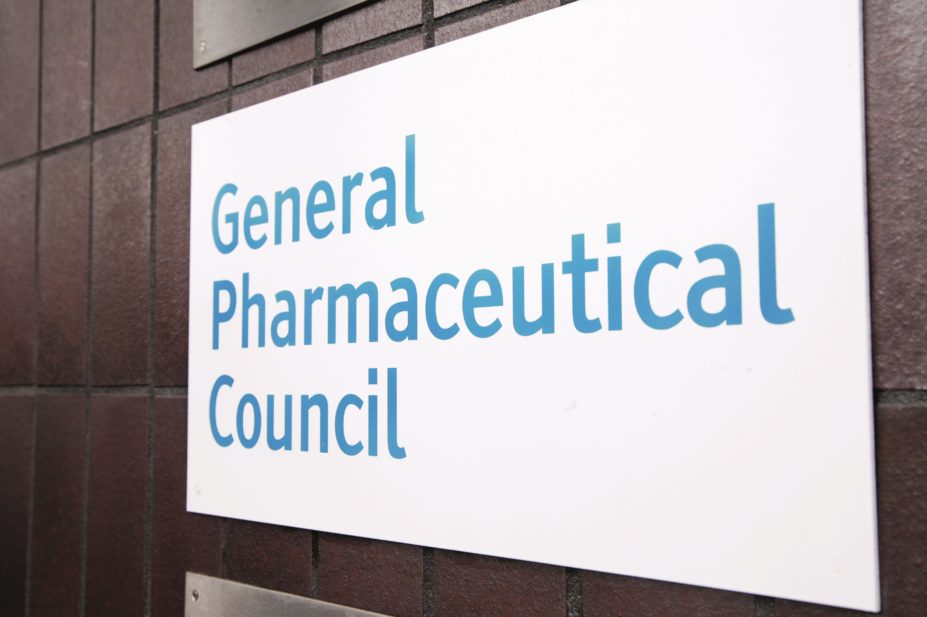
General Pharmaceutical Council
Asian and black pharmacists are overrepresented in the number of fitness-to-practise concerns raised against them, figures released by the pharmacy regulator show.
Data from 2017, presented to the General Pharmaceutical Council (GPhC) on 13 September 2018, show that pharmacists whose ethnicity is described as ‘Asian — other’ have the highest number of fitness-to-practise concerns raised against them relative to the number of pharmacists on the GPhC register.
‘Black African’ pharmacists are second on the list, followed by pharmacists of ‘Pakistani’ background, and then pharmacists whose ethnicity is not supplied. ‘Indian’, ‘Black Caribbean’, and ‘Other ethnic group’ pharmacists all had a higher proportion of fitness-to-practise concerns raised against them than the proportion of the register they make up.
The GPhC figures show that in 2017, 1,110 pharmacists entered fitness-to-practise proceedings after concerns were raised.
All of the ethnic groups that had fewer concerns raised against them than might be expected for their proportion of the register were categorised as white or mixed race, apart from the ‘Chinese/Chinese British’ and ‘Bangladeshi’ categories.
There were 62 concerns raised against pharmacists identified as ‘Asian —other’ and although they make up 3.2% of the pharmacist register overall, they accounted for 5.6% of concerns raised. The GPhC calculated that this meant there were 77.4% more ‘Asian — other’ pharmacists in the fitness-to-practise system relative to their number on the register overall.
Pharmacists who identified as ‘Black African’ constituted 8.6% of cases but only 5.6% of the population — a 46.7% overrepresentation.
Concerns raised about Pakistani and Indian pharmacists were overrepresented in fitness-to-practise processes by 46.6% and 31.4% respectively, the figures show.
By contrast, pharmacists who had listed themselves as White British on the register account for 37.4% of the pharmacist population but only 23.7% of those in fitness-to-practise processes – an underrepresentation of 36.6%.
White British pharmacists had the same number of complaints raised against them as Indian pharmacists, despite having more than double the individuals registered.
In its paper, the GPhC said that analysis of the data is “challenging” because of the small numbers of cases which “can make it difficult to draw meaningful conclusions”.
It also points out that there may be wider issues that influence the reporting of concerns to the GPhC in the first place.
| Table: Percentage comparison of ethnicity by population of the register and concerns raised in 2017 | |||||
|---|---|---|---|---|---|
| Source: General Pharmaceutical Council meeting minutes, 13 September 2018. Available at: https://www.pharmacyregulation.org/sites/default/files/document/2018-09_council_papers_for_website_1.pdf (accessed September 2018) | |||||
| Ethnicity | % of total register | % of concerns raised | % change in population | Total number of registered pharmacists | Total number of concerns raised |
| Asian — other | 3.2 | 5.6 | 77.4 | 1,802 | 62 |
| Black — African | 5.6 | 8.2 | 46.7 | 3,199 | 91 |
| Pakistani | 8.2 | 12.1 | 46.6 | 4,712 | 134 |
| Not supplied | 10.5 | 14.4 | 37.2 | 6,014 | 160 |
| Indian | 18.0 | 23.7 | 31.4 | 10,323 | 263 |
| Black — Caribbean | 0.3 | 0.4 | 25.0 | 165 | 4 |
| Other mixed | 0.5 | 0.5 | 17.2 | 264 | 6 |
| Other ethnic group | 2.2 | 2.4 | 12.1 | 1,242 | 27 |
| Black — other | 0.2 | 0.2 | 9.7 | 94 | 2 |
| White and Black Caribbean | 0.1 | 0.1 | 9.7 | 47 | 1 |
| Bangladeshi | 1.3 | 1.3 | -0.6 | 726 | 14 |
| White and Asian | 0.4 | 0.4 | -15.8 | 245 | 4 |
| White — Other | 5.7 | 4.2 | -25.7 | 3,262 | 47 |
| White — British | 37.4 | 23.7 | -36.6 | 21,395 | 263 |
| White — Irish | 1.7 | 1.0 | -43.0 | 995 | 11 |
| Chinese / Chinese British | 4.6 | 1.9 | -58.9 | 2,636 | 21 |
| White and Black African | 0.2 | 0.0 | -100.0 | 105 | 0 |
| Pharmacist total | 100 | 100 | 57,226 | 1,110 | |
The paper is part of a more expansive piece of research that the GPhC is planning to conduct over the next year to determine whether its fitness-to-practise processes are effective in guarding against discrimination.
“Over the last few years we have been undertaking analysis of our data and providing high level reports on fitness to practise and equality and diversity,” the paper reads.
“More recently we have been exploring in more depth how we might research and better analyse how effective our fitness-to-practise process is at eliminating discrimination.”
The GPhC said it had not published data on the outcomes of fitness-to-practise cases by ethnicity because of limitations in the data.
Mahendra Patel, treasurer at the Royal Pharmaceutical Society but speaking in a personal capacity, said that while the numbers were small the figures showed “a clear trend”.
“The need to look at this trend is also clear. Questions need to be asked about what is going on here,” he said.
He added that only publishing information on those entering proceedings without any data on the outcome of the fitness-to-practise hearings “only showed part of the picture”.
You may also be interested in

Record number of fitness-to-practise cases creates ‘increased risk’ of missing patient safety threats, regulator warns

Number of fitness-to-practise cases open for more than a year increases to 430 cases, regulator tells MP
